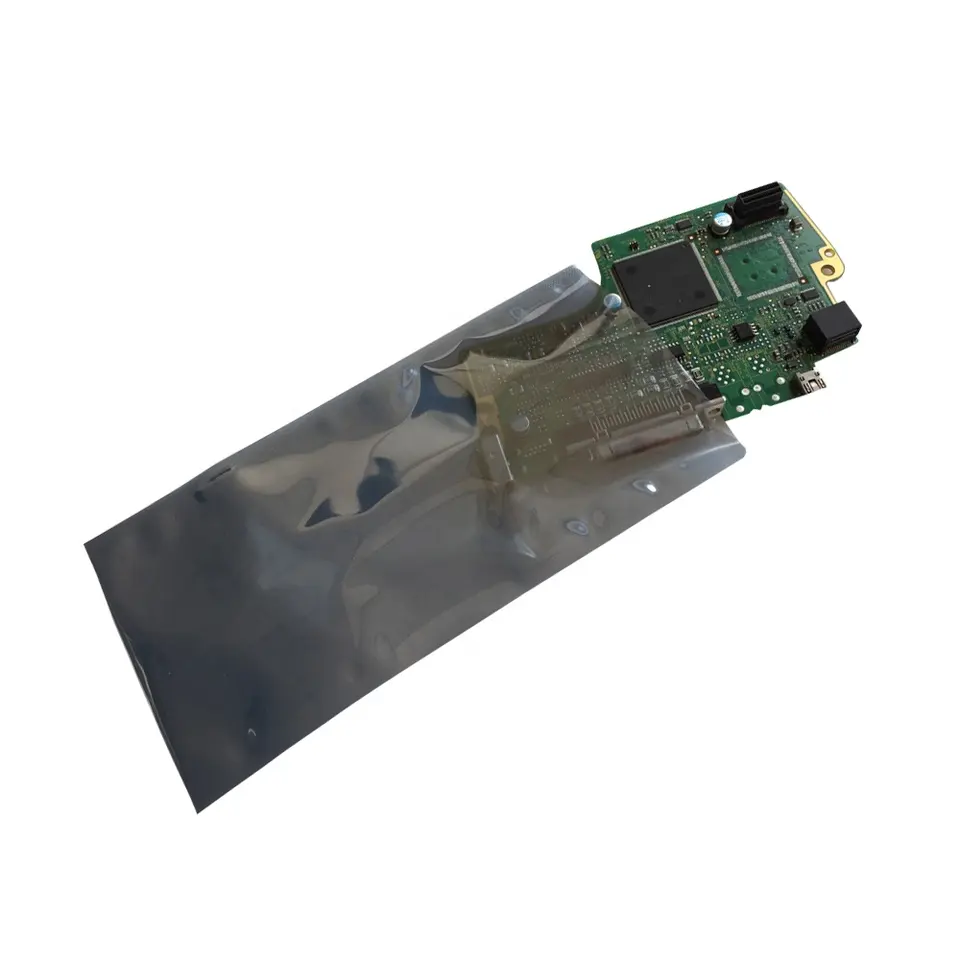The Importance of ESD Bags in Safeguarding Electronics
In today’s technology-driven world, electronic devices play an integral role in our daily lives. From smartphones and laptops to intricate circuit boards and delicate components, these electronics are susceptible to damage caused by electrostatic discharge (ESD). To mitigate this risk, the use of Electrostatic Discharge (ESD) bags has become essential. This article delves into the world of ESD bags, explaining what they are, their significance, and how they offer protection to sensitive electronic equipment.

What are ESD Bags?
Electrostatic Discharge (ESD) bags, also known as anti-static bags or shielding bags, are specialized packaging solutions designed to prevent static electricity from damaging sensitive electronic components during handling, transportation, and storage. These bags are typically made from a blend of polymers, including polyethylene and polypropylene, which possess inherent anti-static properties.
Anti-static bags work by creating a protective shield around the electronic components, dissipating static electricity that may accumulate on the bag’s surface and preventing it from transferring to the enclosed devices. This safeguarding process helps to maintain the integrity and functionality of the electronic components, ensuring their longevity and reducing the risk of costly damage.
The Significance of ESD Bags in Electronics InAdustry
The electronics industry heavily relies on ESD bags as an integral part of their electrostatic discharge control program. Here are some key reasons why ESD bags are of paramount importance:
- Protection against ESD: ESD can occur during routine handling or movement of electronic devices. Even the smallest electrostatic discharge, which is often imperceptible to human senses, can cause irreparable damage to delicate electronic components. ESD bags provide a reliable and effective barrier, shielding the devices from static electricity and minimizing the risk of damage.
- Static Dissipation: anti-static bags are designed to dissipate static electricity, ensuring that any charges accumulated on the bag’s surface are discharged safely. By doing so, ESD bags prevent the accumulation of static charges that could harm the enclosed electronic devices.
- Environmental Shielding: anti-static bags also offer protection against external factors, such as moisture, dust, and contaminants, which can adversely affect electronic components. These bags are often constructed with multiple layers, including a metallized layer, to create a barrier against moisture and other potentially harmful elements.
- Compliance with Industry Standards: Many industries, such as electronics manufacturing and aerospace, have stringent quality control and safety standards in place. The use of ESD bags is often mandated to comply with these standards, ensuring the safe handling and transportation of sensitive electronic equipment.
Frequently Asked Questions (FAQs) about ESD Bags
Here are answers to some of the most frequently asked questions about ESD bags:
How do I choose the right size of ESD bag for my electronic components?
To choose the right size of ESD bag, consider the dimensions of your electronic components and the number of devices you wish to store or transport in a single bag. It is crucial to ensure that there is ample space within the bag to prevent any potential damage caused by overcrowding or contact between components.
Can ESD bags be reused, or should they be discarded after each use?
ESD bags can be reused, provided they remain in good condition and maintain their anti-static properties. Regular inspection is recommended to check for any signs of wear or damage, such as punctures or tears, which can compromise the bag’s effectiveness. If any damage is detected, the bag should be replaced to ensure the continued protection of the electronic components.
Are ESD bags suitable for long-term storage of electronic devices?
Yes, ESD bags are suitable for long-term storage of electronic devices. These bags are designed to provide durable protection against ESD and environmental factors, making them ideal for preserving the integrity of electronic components during extended periods of storage. However, it is important to ensure that the bags are stored in a controlled environment, free from excessive humidity, extreme temperatures, or direct sunlight, to maintain their effectiveness.
Conclusion:
ESD bags are indispensable in the realm of electronics, offering a reliable and efficient solution for protecting sensitive electronic components from electrostatic discharge. By dissipating static electricity and providing a physical barrier against environmental factors, these bags ensure the safe handling, transportation, and storage of electronic devices. As the electronics industry continues to advance, the role of anti-static bags becomes increasingly vital in safeguarding valuable and delicate electronics, enabling their longevity and optimal performance.
continue reading




